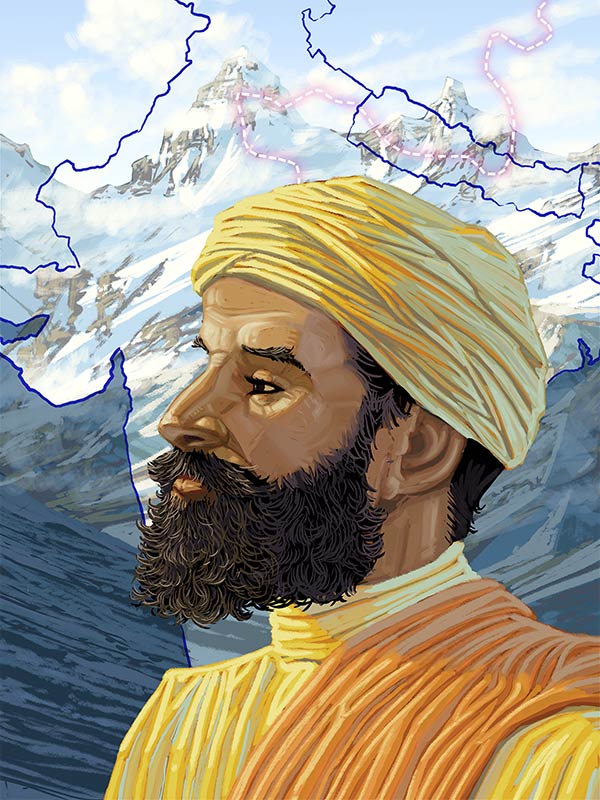Subtotal: $
Checkout-

Covering the Cover: The Vows That Bind
-

The Day No One Would Say the Nazis Were Bad
-

John Wayne, The Quiet Man
-

No Promises
-

Word Is Bond
-

Bring Back Hippocrates
-

The Dance of Devotion
-

Victor Hugo’s Masterpiece of Impossibility
-

A Vow Will Keep You
-

A Broken but Faithful Marriage
-

Can Love Take Sides?
-

A Defense of Vows
-

Why I Chose Poverty
-

Demystifying Chastity
-

The Adventure of Obedience
-

Vows of Baptism
-

Hutterite Ten Points of Baptism
-

The One Who Promises
-

Vows in Brief
-

The Raceless Gospel
-

Poem: “Blessing the Bells”
-

Poem: “Autumn in Chrysalis-Time”
-

Tiny Knights
-

Editors’ Picks: What Your Food Ate
-

Editors’ Picks: Untrustworthy
-

Editors’ Picks: The Last White Man
-

Retooling the Plough
-

Charting the Future of Pro-Life
-

Letters from Readers
-

Home in My Heart
-

Remembering Alice von Hildebrand

Sadhu Sundar Singh
A modern Saint Francis, Sundar Singh left his family and ancestral faith to follow Jesus without Western trappings.
By Susannah Black Roberts
September 3, 2022
Next Article:
Explore Other Articles:
Punjab, India, 1903. The fourteen-year-old boy wakes up at three in the morning, bathes, and chants the Sikh morning prayer:
One universal creator God. His name is Truth. Creative being personified. … Image of the Undying, beyond birth, self-existent. … How can you become truthful? And how can the veil of illusion be torn away?
His mother had taught him the prayers: she had been, he said, “a living example of the love of God.” And now she was dead.
Three days before, at school, he had horrified his father by burning a Bible. He was full of frustration and rage: the gurus his mother had taken him to meet had themselves been hunters after God, seekers of the peace he himself craved. And this Christianity was the religion of the colonizers.
“I prayed,” he wrote later of that moment, “that if there was a God at all, he would reveal himself to me. Should I receive no answer by morning, I would place my head on the railroad tracks and seek the answer to my questions beyond the edge of this life.”
An hour and a half later, he saw something like a glow in the room. And then he saw someone in the light. That someone spoke, in Urdu.
“Sundar, how long will you mock me? I have come to save you because you have prayed to find the way of truth. Why then don’t you accept it?”
It was then I saw the marks of blood on his hands and feet and knew that it was Yesu, the one proclaimed by the Christians. In amazement I fell at his feet. I was filled with deep sorrow and remorse for my insults and my irreverence, but also with a wonderful peace. This was the joy I had been seeking.
He immediately went to tell his father that he was going to be a follower of Jesus now. His father told him to go back to sleep.
In the morning, though, Sundar didn’t budge, despite his father’s pleadings: he was going to be baptized. He cut off his hair, the long hair that is the mark of a Sikh man. His father, grief-stricken, spoke a vow: “We reject you forever and cast you from among us. You shall be no more my son. … For us, you are as one who was never born.”

Ned Gannon, Sadhu Sundar Singh, 2022
Sundar explained himself to the missionaries at his school – the ones he had mocked. They sent him to a nearby boarding school. On his sixteenth birthday, in the parish church in Shimla, at the foothills of the Himalayas, he was baptized.
He might have become an Anglican minister, or a state administrator, rising up the ranks in the massive colonial apparatus. Instead, on the day of his baptism, he vanished into the mountains. He reappeared a month later, wearing a saffron robe, looking like any one of the Hindu sadhus or Buddhist lamas who traversed the country.
Having made his baptismal vows, he made other commitments: he would be celibate. He would travel. And he would do this as an Indian holy man, not as an agent of colonial power. “I am not worthy to follow in the steps of my Lord,” he said, “but, like him, I want no home, no possessions. Like him I will belong to the road, sharing the suffering of my people, eating with those who will give me shelter, and telling all people of the love of God.”
Tales of healings and visions cluster around these years. He worked for a time in a leper colony. And there were many conversions. Everywhere he went, he spoke of the Christ who was both the Way and the destination of that Way, the Christ who was the end of every pilgrimage and the light of every enlightenment.
Christianity was not a faith foreign to India. The apostle Thomas is said to have traveled there; the Indian Orthodox Church is two thousand years old. But Sundar felt himself to be the heir of his mother’s spiritual quest, which had led through Hindu, Buddhist, and Sikh traditions.
It was to the seekers that he went. And he went where they went: into the mountains, toward Tibet, pressing to the roof of the world.
He recalled a conversation he had had, during these travels, with an old lama who lived in a cave. The two exchanged notes on their spiritual paths. “What have you gained through your seclusion and meditation?” Sundar asked.
“I seek nirvana, the elimination of all feeling and all desire – whether of pain or of peace. But still I live in spiritual darkness. I do not know what the end will be.”
“Surely, your longings and feelings arise from the God who created you,” Sundar responded. “They were surely created in order to be fulfilled, not crushed. The destruction of all desire cannot lead to release, but only to suicide. Are not our desires inseparably intertwined with the continuation of life? … Surely we shall find peace not by eliminating desire, but by finding its fulfillment and satisfaction in the One who created it.”
After World War I, he visited Ceylon, Burma, China, Japan, Britain, the United States, and Europe. He was appalled by the West – the Lost Generation with its grasping after immediate pleasure. It seemed empty to him: India, he thought, had at the very least a sense of the divine.
The traveling took its toll. By 1923, his health failing, he settled down to write and live the life of Christian fellowship. By this time, he had reconciled with his father, who had himself converted.
But in 1929, the road called again. The last trace of him that we have is word of his leaving a town in the foothills of the Himalayas, heading into the mountains, in the company of other pilgrims. He was never seen again.
Sundar’s writings have come to be appreciated by Orthodox, Catholic, and Protestant Christians the world over. Even the Anglican Church has given him a feast day, June 19. I suspect Sundar would have something to say about that. To be commemorated posthumously by the Western Christianity that he so vigorously critiqued is a plot twist that would probably make him smile.
Already a subscriber? Sign in
Try 3 months of unlimited access. Start your FREE TRIAL today. Cancel anytime.









































